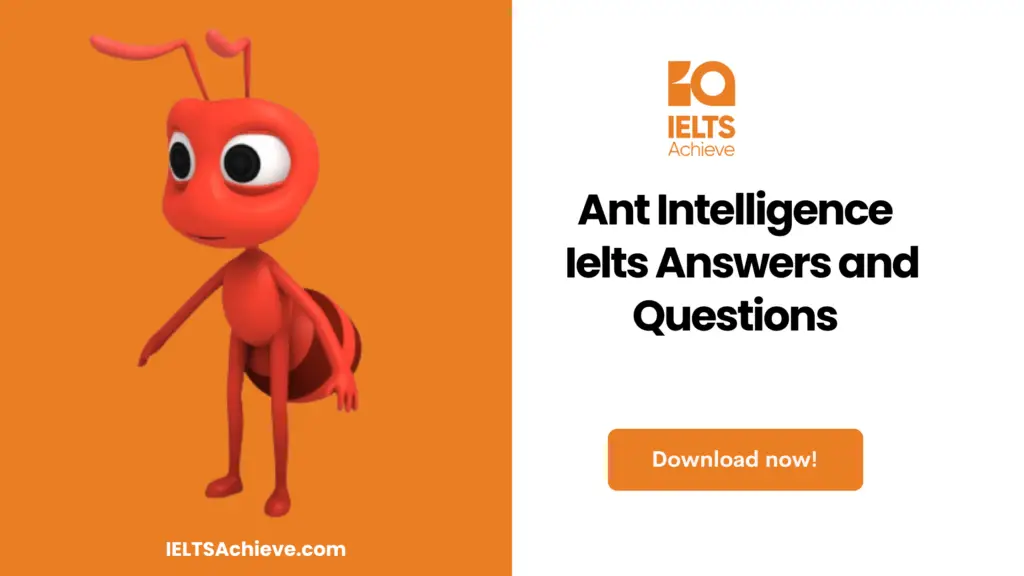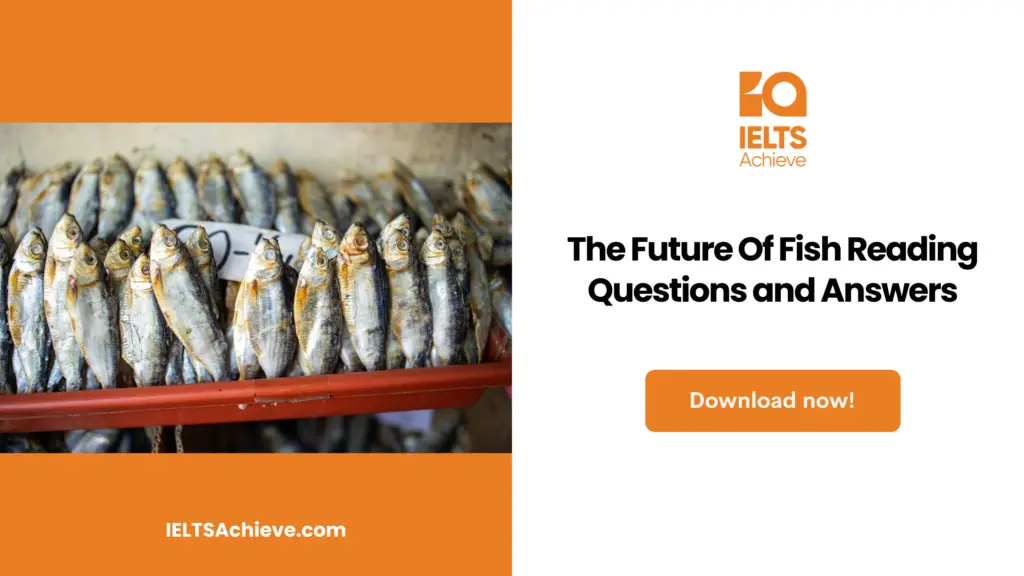
Reading Text 1
This text is from Science Mag and written by Carrie Arnold
You should spend around 20 minutes on Questions 1-13, which are based on reading text 1.
Shhh, The Ants Are Talking
If you want to survive as an ant, you’d better get ready to make some noise. A new study shows that even ant pupae—a stage between larvae and adult—can communicate via sound and that this communication can be crucial to their survival.
“What’s very cool about this paper is that researchers have shown for the first time that pupae do, in fact, make some sort of a sound,” says Phil DeVries, an entomologist at the University of New Orleans in Louisiana who was not involved in the study. “This was a very clever piece of natural history and science.”
Scientists have known for decades that ants use a variety of small chemicals known as pheromones to communicate. Perhaps the most classic example is the trail of pheromones the insect’s place as they walk. Those behind them follow this trail, leading to long lines of ants marching one by one. However, the insects also use pheromones to identify which nest an ant is from and its social status in that nest. Because this chemical communication is so prevalent and complex, researchers long believed that this was the primary way ants shared information.
However, several years ago, researchers began to notice that adults in some ant genuses, such as Myrmica, which contains more than 200 diverse species found across Europe and Asia, made noise. These types of ants have a specialised spike along their abdomen that they stroke with one of their hind legs, similar to dragging the teeth of a comb along the edge of a table. Preliminary studies seemed to indicate that this noise served primarily as an emergency beacon, allowing the ants to shout for help when being threatened by a predator.
Larvae and young pupae have soft outer skeletons, which means their specialised spikes haven’t yet formed and they can’t make noise. However, as the pupae mature, their covering hardens into a tough exoskeleton like that found in adult ants. These older pupae do have fully functional spikes but were generally thought to be silent.
Karsten Schönrogge, an entomologist at the Centre for Ecology & Hydrology, Wallingford, in the United Kingdom, thought it odd that mature pupae would have the capability to produce sound but remain silent. So he and his colleagues listened in to a group of Myrmica scabrinodisants. These 4- to 5-millimeter-long, reddish-brown ants are commonly found in northern Europe, in low-lying areas like peat bogs.
Using an extra-sensitive microphone that would pick up on the faint acoustic signals, the researchers measured the sounds produced by 10 differentM. scabrinodis larvae, six immature pupae, and six mature pupae. Whereas the larvae and immature pupae were completely silent, the mature pupae produced brief pulses of sound, the team reports online today in Current Biology.
Further analysis of this noise showed that it was a simplified version of the more complex adult sound. It was as if the mature pupae were saying, “Help!” while the adults were saying “Hey, I’m over here! Please come help! It’s your friend!”
To test the function of these noises in the mature pupae, the researchers first played back the sounds made by either the mature pupae or adult M. scabrinodis. Adult worker ants responded the same way to both recordings, such as walking over to the speaker, rubbing their antennae against it, and guarding it. They didn’t show these responses when Schönrogge and colleagues played white noise. These behaviours, which represent a worker ant’s attempts to protect its nestmates, indicate that acoustic communication served to bring assistance in both mature pupae and adult ants.
To see how the ants used this acoustic communication, the team removed the abdominal spike from some of the mature pupae in a nest. The researchers then disturbed the nest, spilling out larvae, pupae, and adult workers into an experimental arena. Normally, the adult ants rescue their nestmates in a specific order: mature pupae, immature pupae, and, finally, the larvae. In the experiments by Schönrogge and colleagues, the adult workers indeed rescued the unmuted mature pupae first. However, the adult ants completely ignored the muted ants. It was as if the mute mature pupae simply didn’t exist.
“The sounds they make rescue them by signalling their social status,” Schönrogge says. “There is complex information in these signals,” that combine with chemical signals to provide an array of information about the individual. Researchers have yet to decode everything the ants are communicating by sound and how the ants interpret these signals. Acoustic communication may be especially important in mature pupae because they don’t yet produce the full array of adult pheromones, but they also don’t smell and behave like larvae, either.
DeVries cautions that the discovery doesn’t mean that chemical communication in ants is less important. “Ants live in these enormously sophisticated societies,” he says. “Acoustic signalling adds another gorgeous piece to what we know about how insect societies communicate.”
Questions 1-6
Do the following statements agree with the information in the text?
In boxes 1-6 on your answer sheet, write
- True – if the statement agrees with the information
- False – if the statement contradicts the information
- Not Given – if there is no information present
1. Adult ants have spiked legs
2. Mature ants and pupae can convey they need help by creating sounds
3. The larvae do no produce any signals
4. Quiet ants were not retrieved by the mature ants
5. The ants tested did not show any positions relating to hierarchy
6. Ants live in practical communities
Questions 7-9
Complete each sentence with the correct ending, A-F below
Write the correct letter A-F, in boxes 7-9 on your answer sheet.
7. The ants can use their sense of smell
8. Some ants can create a sound
9. Some researchers
A. to detect other insects
B. to talk to each other and gain knowledge of their place in the hierarchy
C. from using their antennae
D. that is used to ask for help
E. documented the tone from various stages of ant formation
F. created a support network for the ants
Questions 10-13
Complete the flow chart below.
Choose NO MORE THAN TWO WORDS from the text for each answer.
Write your answers in boxes 10-13 on your answer sheet.

If you need help to answer these questions with extra practice please read the posts below >>
Practice IELTS Listening based on question types
Multiple choice
Matching
Plan, map, diagram labelling
Form, note, table, flow-chart, summary completion
Sentence completion
Short-answer questions
Answers >>
Questions 1-6
1. Not Given
2. True
3. False
4. True
5. False
6. True
Questions 7-9
7. – B
8. – D
9. – E
Questions 10-13
10. specialised spike
11. threatened
12. pupae
13. tough exoskeleton
Part Two of Academic Reading Test 1
Part Three of Academic Reading Test 1
We hope you found this post useful in helping you to study for the IELTS Test. If you have any questions please let us know in the comments below or on the Facebook page.
The best way to keep up to date with posts like this is to like us on Facebook, then follow us on Instagram and Pinterest.
If you need help preparing for the IELTS Test, join the IELTS Achieve Academy and see how we can assist you to achieve your desired band score. We offer an essay correction service, mock exams and online courses.


